Summary
Revista Brasileira de Ginecologia e Obstetrícia. 2018;40(2):96-102
Interstitial cystitis (IC), including bladder pain syndrome (BPS), is a chronic and debilitating disease thatmainly affectswomen. It is characterized by pelvic pain associated with urinary urgency, frequency, nocturia and negative urine culture,with normal cytology. In 2009, the Society for Urodynamics and Female Urology (SUFU) defined the term IC/BPS as an unpleasant sensation (pain, pressure, and discomfort) perceived to be related to the urinary bladder, associated with lower urinary tract symptoms for more than 6 weeks duration, in the absence of infection or other identifiable causes. This is the definition used by the American Urological Association (AUA) in the most recent guidelines on IC/BPS. Interstitial cystitis may be sufficiently severe to have a devastating effect on the quality of life, but it may also be associated with moderate symptoms whose effects are less debilitating. Although there are several clinical trials to assess oral and intravesical therapies, the treatment for IC remains far from ideal. This systematic assessment evaluates published randomized clinical trials on oralmedications used totreat symptoms of BPS. This studywas performed according to the preferred reporting items for systematic reviews and metaanalyses (PRISMA)method. Two independent reviewers screened the studies to determine their inclusion or exclusion and to perform the methodological analysis. The inclusion criteria included randomized studiespublishedbetween April of 1988and April of2016 that used oral medications to treat symptoms of BPS or IC. According to the systematic review performed,we should consider pentosan polysulfate as one of the bestoptions of oral drugs for the treatment of BPS symptoms. However, this drug is not an available option in Brazil. Orally administered amitriptyline is an efficacious medical treatment for BPS, and it should be the first treatment offered.
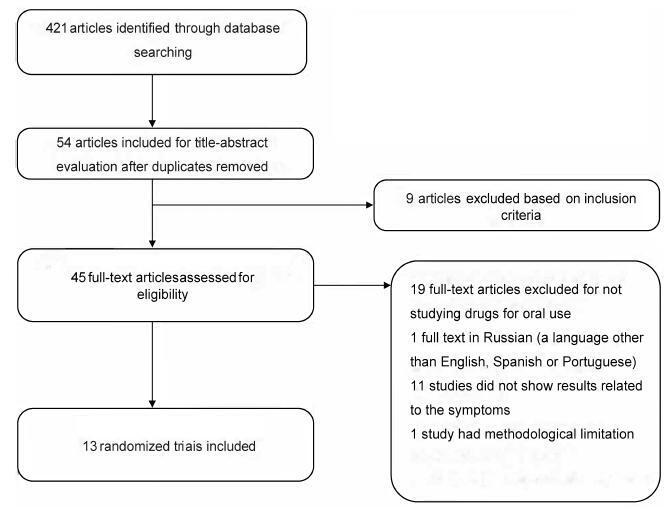
Summary
Revista Brasileira de Ginecologia e Obstetrícia. 2007;29(2):96-102
DOI 10.1590/S0100-72032007000200007
PURPOSE: to evaluate the classification and the etiology of girls attended in a Pediatric and Adolescent Gynecology Clinic. METHODS: The hospital charts of 58 female patients attended from 2000 to 2005 with diagnosis of probable precocious puberty were reviewed and relevant data analyzed. Inclusion criteria were breast and/or pubic hair growth before eight years old. The girls were classified according to the clinic aspects and the supplementary exams they had been submitted to, into one of the categories: central precocious puberty (CPP), precocious pseudopuberty, premature thelarche and premature pubarche. RESULTS: from the 58 reviewed cases, 28 girls were diagnosed as CPP, one as precocious pseudopuberty, ten as premature thelarche and 19 as premature pubarche. All the cases of CPP had an idiopathic etiology, except for one girl whose activation of the ypothalamic-pituitary-gonadal axis was secondary to congenital adrenal hyperplasia. There was one case of precocious pseudopuberty due to McCune-Albright syndrome. All the cases of premature thelarche had an idiopathic etiology, except for one girl who had primary hypothyroidism. All the cases of premature pubarche had an idiopathic etiology. CONCLUSIONS: among the cases diagnosed as precocious puberty, CPP was the leading diagnosis and most cases had an idiopathic etiology. Organic causes leading to precocious puberty were infrequent.
Summary
Revista Brasileira de Ginecologia e Obstetrícia. 2020;42(2):96-105
To evaluate the knowledge related to human papillomavirus (HPV) infection and the rate of HPV vaccination among undergraduate freshmen and senior students of medicine, pharmacy, speech therapy, nursing and physical education in a Brazilian university.
A questionnaire concerning sociodemographic aspects, sexual background, and knowledge about HPV and its vaccine was filled out by 492 students. Three months later, a second questionnaire, concerning the new rate of vaccination, was applied to 233 students.
Among the 290 women who answered the first questionnaire, 47% of the freshmen and 13% of the seniors stated they were not sexually active, as well as 11% of the 202 freshman and senior male students. Although the knowledge about HPV was higher among women, they reported a lower use of condoms. More than 83% of the women and 66% of the men knew that HPV can cause cervical cancer, but less than 30% of the students knew that HPV can cause vulvar, anal, penile and oropharyngeal cancer. Less than half of the students knew that HPV causes genital, anal and oropharyngeal warts. Comparing the students, the seniors had more knowledge of the fact that HPV is sexually transmitted, and that HPV infection can be asymptomatic. The rate of vaccination was of 26% for women, and of 8% for men, and it increased to 52% and 27% respectively among the 233 students evaluated in the second questionnaire.
As almost half of freshman women declared being sexually inactive, the investment in public health information programs and easier access to the HPV vaccine seem to be a useful strategy for undergraduate students.
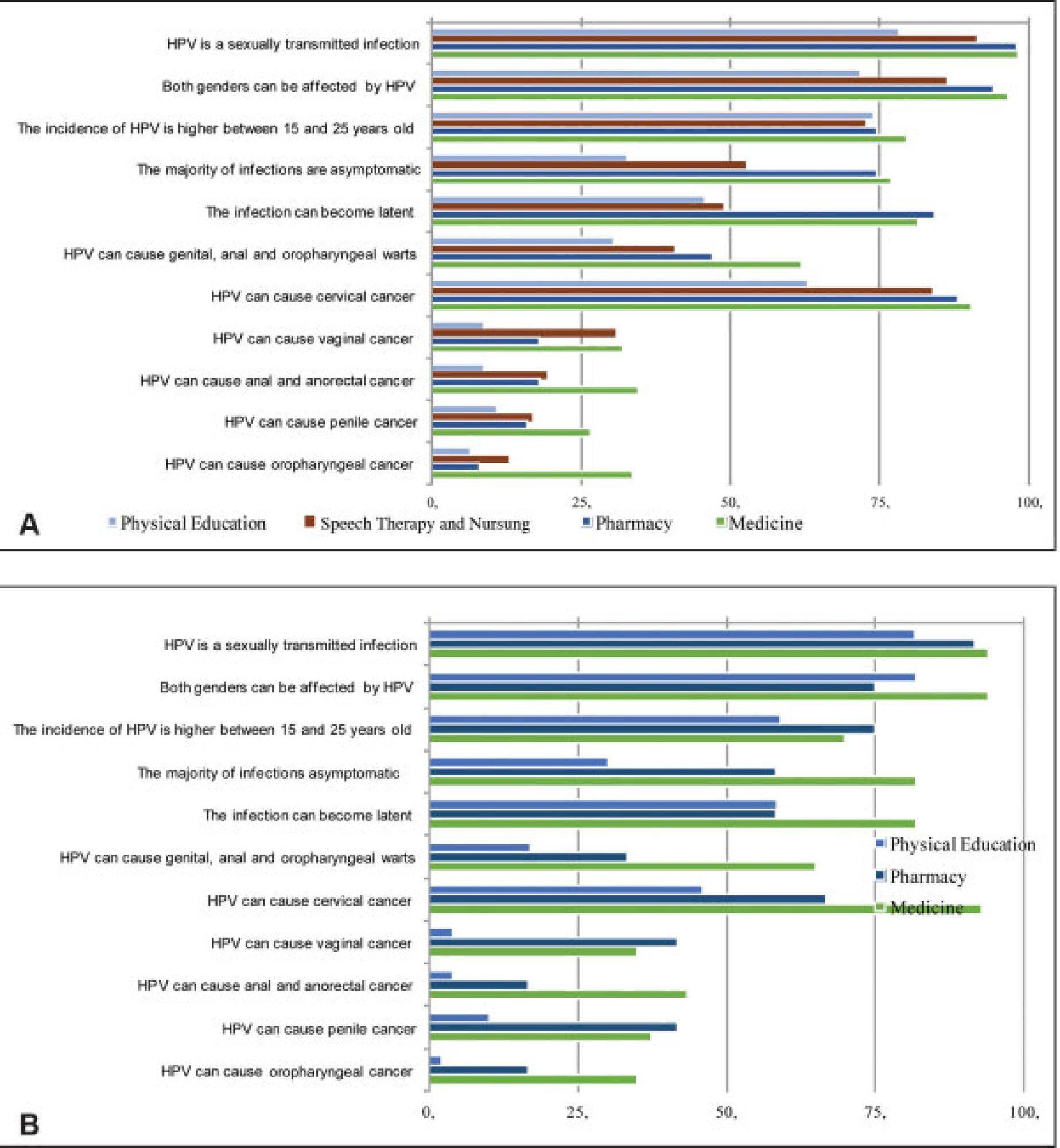
Summary
Revista Brasileira de Ginecologia e Obstetrícia. 2021;43(12):961-967
To evaluate the differences between bladder emptying options (permanent catheterization and intermittent bladder emptying/spontaneous urination) regarding the effects on labor length, need of operative vaginal deliveries, and cesarean section rate.
The search was conducted in MEDLINE, Scopus, Web of Science, and The Cochrane Central Register of Controlled Trials databases.
The survey returned 964 studies. A total of 719 studies were evaluated by title and abstract, of which 4 were selected for inclusion.
All references were inserted in the Rayyan QCRI tool (Rayyan Systems Inc., Cambridge, MA, USA). The full text of the selected articles was obtained so we could later decide whether or not to include them in this systematic review.
No differences were found in the number of instrumented deliveries or in cesarean section rate between groups.
After evaluating the studies performed on the topic, we concluded that there is no clear advantage to either method, although continuous catheterization was associated with a greater occurrence of eutocic births. In the remaining outcomes, there were no differences between catheterization types.
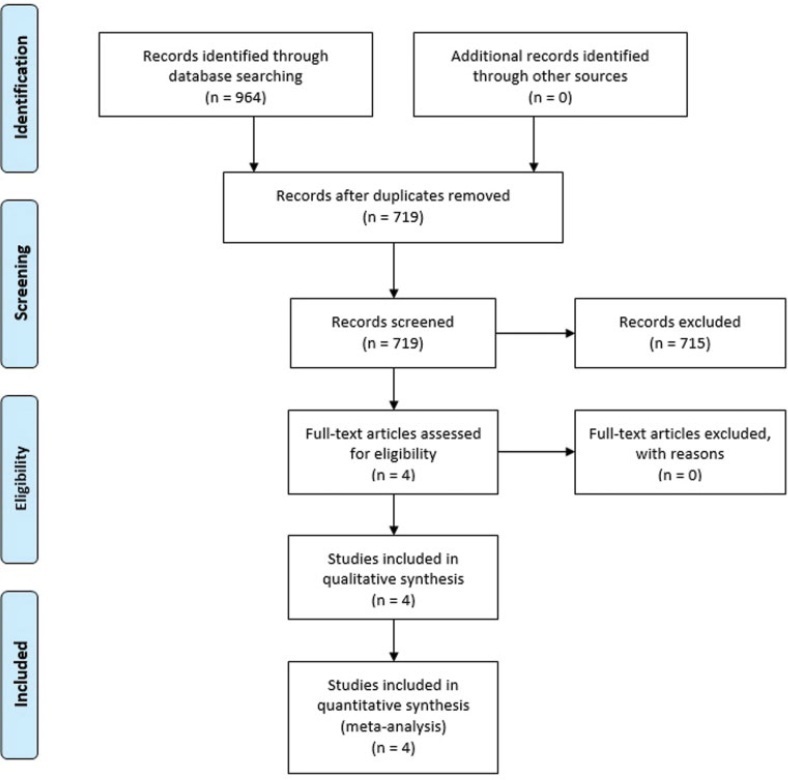
Summary
Revista Brasileira de Ginecologia e Obstetrícia. 2022;44(10):962-971
To explore the main sexuality complaints of gynecologic cancer survivors after treatment and to identify the care strategies provided.
Searches were conducted in six electronic databases: Scopus, Web of Science, LILACS, MEDLINE, PsychINFO, and EMBASE.
Articles published between 2010 and 2020 were selected and the following descriptors were used in the English language: female genital neoplasms and gynaecological cancer. The methodological quality of the studies used the Mixed Methods Appraisal Tool (MMAT).
The primary data extracted were: names of the authors, year of publication, country of origin, objective and type of study, data collection instrument, sample size and age range, types of cancer, and symptoms affected with the strategies adopted.
A total of 34 out of 2,536 screened articles were included. The main strategies found for patient care were patient-clinician communication, practices for sexuality care, individualized care plan, multiprofessional team support, and development of rehabilitation programs. For sexuality care, the most common practices are pelvic physiotherapy sessions and the use of vaginal gels and moisturizers.
The main complaints identified in the scientific literature were low libido and lack of interest in sexual activity, vaginal dryness, pain during sexual intercourse, and stenosis. Different care strategies may be adopted, such as follow-up with a multidisciplinary health team and sexual health rehabilitation programs, which could minimize these symptoms and ensure the quality of life of patients.
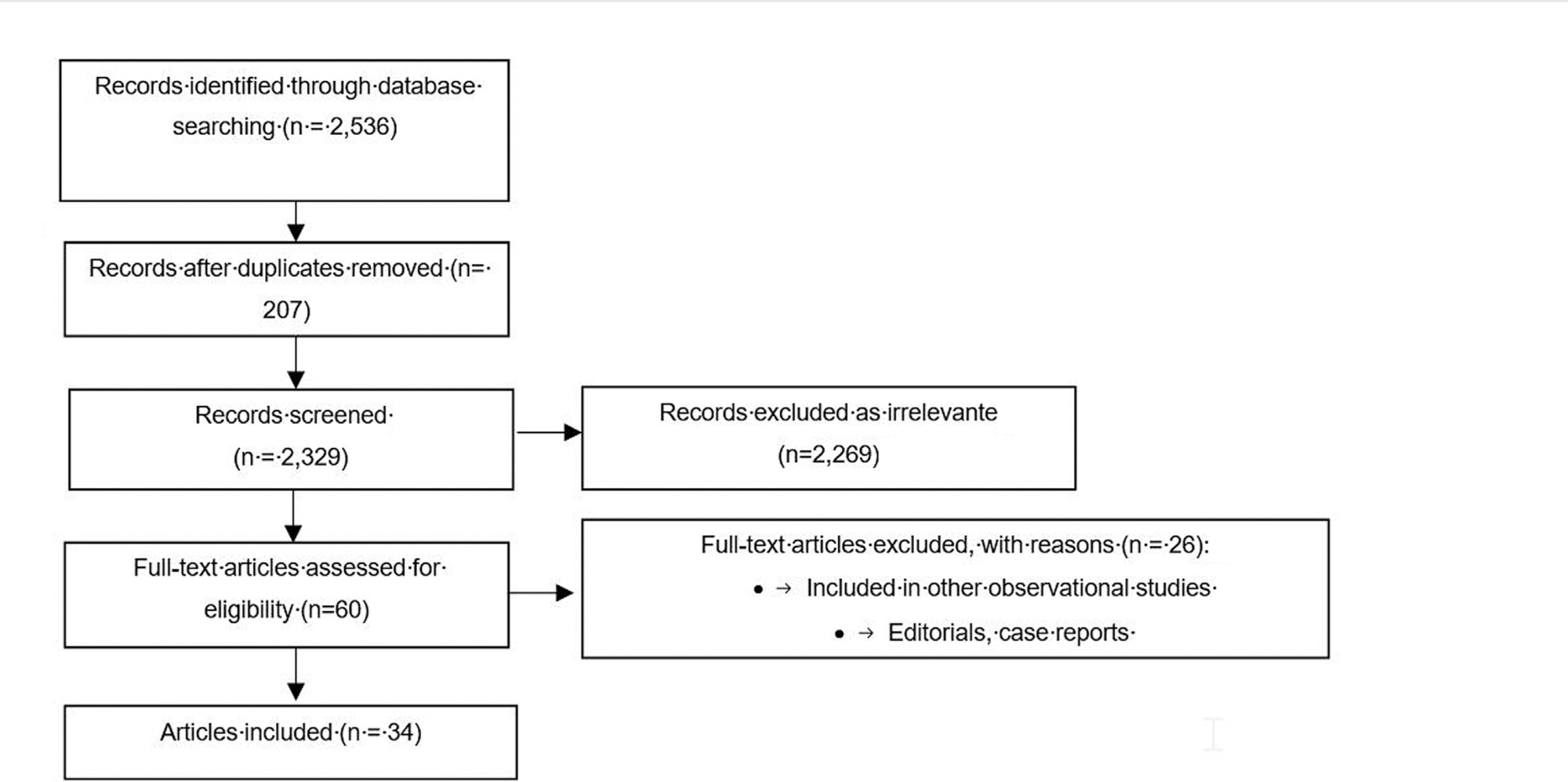
Summary
Revista Brasileira de Ginecologia e Obstetrícia. 2021;43(12):968-979
The aim of the present systematic review meta-analysis is to assess the effect of olfactory stimulation on reducing dysmenorrhea.
Systematic search was conducted in several databases, such as PubMed, Web of Science, Cochrane, and Scopus, to identify relevant research up to October 26, 2019. The identified studies were evaluated based on a modified Jadad scale. The intervention involves aromatherapy alone or in combination with essential oils. There was no restriction for the control group such as a placebo group or other common treatments. The Comprehensive Meta-Analysis Version 2 (Bio stat, Englewood, NJ, USA) was used for meta-analysis. Cochran’s Q and I2 tests were utilized.
The findings of our meta-analysis, which contained 13 trials (15 data), showed that dysmenorrhea decreased significantly in the group receiving aromatherapy with herbal compared with the control group (standardized mean difference [SMD] =-0.795; 95% confidence interval [CI]: -0.922 to- 0.667; 17 trials O < 0.001); heterogeneity; I2 = 19.47%; p = 0.236). In addition, four studies with insufficient data were not included in our meta-analysis. The results of all studies suggested that aromatherapy with herbal medicine group compared with control group is effective.
Aromatherapy with herbal medicine decreased dysmenorrhea. This treatment was particularly effective when aroma oil was combined with massage or when a mixture of aroma oil was used for the treatment of dysmenorrhea.
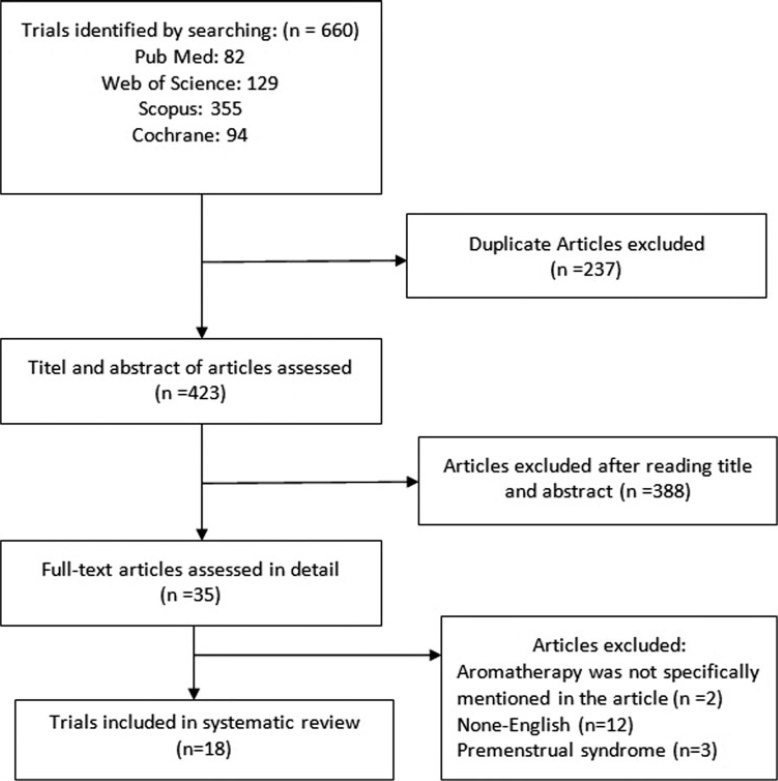
Summary
Revista Brasileira de Ginecologia e Obstetrícia. 2021;43(2):97-106
Cases of maternal near miss are those in which women survive severe maternal complications during pregnancy or the puerperium. This ecological study aimed to identify the temporal trend of near-miss cases in different regions of Brazil between 2010 and 2018, using data fromtheHospital Information System(HIS) of theUnified BrazilianHealth System (SUS, in the Portuguese acronym). Hospital admission records of women between 10 and 49 years old with diagnosis included in the 10th Revision of the International Statistical Classification of Diseases and Related Health Problems (ICD-10) and codes indicating nearmiss events were selected. From 20,891,040 admissions due to obstetric causes, 766,249 (3.66%) near-miss cases were identified, and 31,475 women needed admission to the intensive care unit (ICU). The cases were found to be more predominant in black women over 35 years old from the North and Northeast regions. There was a trend of increase in near-miss rates of ~ 13.5% a year during the period of the study. The trend presented a different behavior depending on the level of development of the region studied. The main causes of near miss were preeclampsia (47%), hemorrhage (24%), and sepsis (18%).
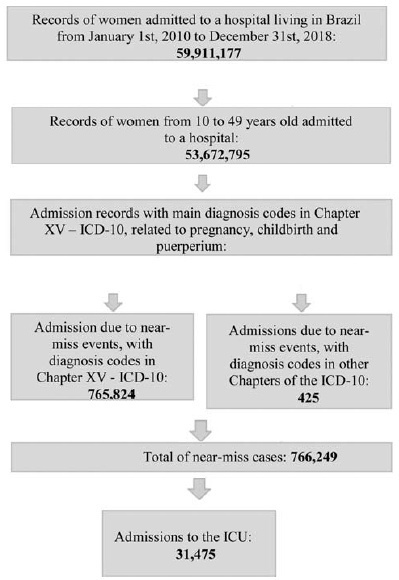
Summary
Revista Brasileira de Ginecologia e Obstetrícia. 2004;26(2):97-102
DOI 10.1590/S0100-72032004000200003
PURPOSE: to correlate the type of cervical lesion diagnosed by Pap smear with CD4 cell counts and HIV-RNA viral load in HIV-positive patients. METHODS: one hundred and fifteen HIV patients were evaluated retrospectively in the present study, during the period from January 2002 to April 2003, at a university hospital. Eighty-three patients presented cervical intraepithelial neoplasia (CIN) in Pap smear, in comparison with thirty-two with no lesions. Patients were divided into three groups, according to CD4 counts: CD4 more than 500 cells/mm³, between 200 and 500 cells/mm³, and less than 200 cells/mm³, and other three groups, according to HIV viral load: less than 10,000 HIV-RNA copies/mL, between 10,000 and 100,000 HIV-RNA copies/mL, or more than 100,000 HIV-RNA copies/mL. Correlation was investigated by the Fisher test. RESULTS: of the eighty-three patients with CIN, 73% presented CD4 counts less than 500 cells/mm³. In all CD4 groups, more than 50% of the patients presented CIN. According to the viral load, 71.7% of the patients with less than 10,000 HIV-RNA copies/mL presented CIN I, compared with 11.3% that showed CIN III. In the group with higher viral load (>100.000 HIV-RNA copies/mL), 61.5% showed CIN I and 30.8% presented CIN III. CONCLUSION: association between viral load and CIN was established (p=0.013), which was not observed with CD4 cell counts and CIN. Concomitant cervicovaginal infection was considered a potential confounding factor.